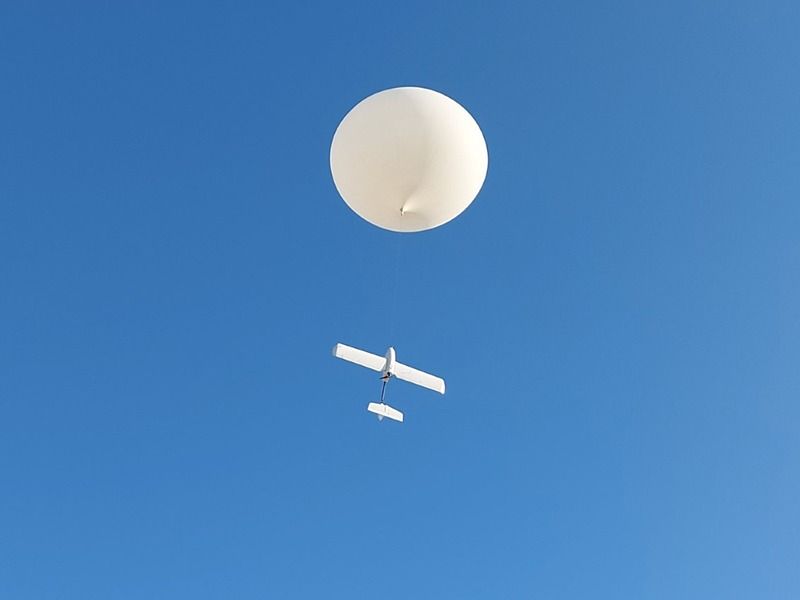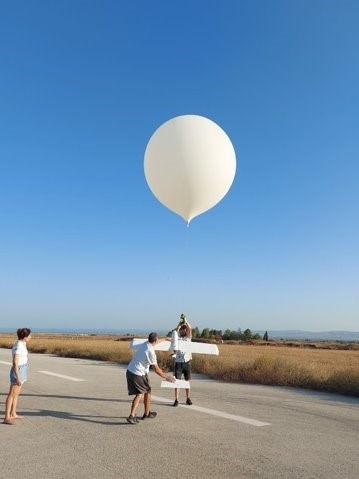
UAV-balloon scientific flight by CARE-C scientists – a novel way of measuring aerosols in Cyprus
On 26 July, 2023, CARE-C scientists of the Unmanned Systems Research Laboratory (USRL) and the Cyprus Atmospheric Observatory (CAO), at the Cyprus Institute, flew a state-of-the-art UAV-balloon system at the USRL airfield in Orounda, Nicosia in order to study the atmosphere and atmospheric aerosol properties from the ground up to 6 km altitude. This is a novel way of measuring local and transported air pollution along the atmospheric column in Cyprus and more widely in Europe.
The UAV-balloon recorded a very dry atmosphere over Orounda in the early morning, with Relative Humidity levels less than 20% from the ground up to 6 km. The temperature decreased from 30°C at the ground, to -10°C at 6,000m. Presence of particles from the ground up to 2,000 m was recorded and then clean atmosphere from 2,000 to 4,000 m ASL. An unusual aerosol layer was found from 4,000 to 6,000m, which can be attributed to a combination of Saharan dust transport and smoke from Canadian wildfires, as seen by the backtrajectories model.
The UAV-balloon flight was conducted within the framework of the Assessment of Climate Change Effects on Pollution Transport in Cyprus (ACCEPT) project, which the Cyprus Institute is a partner.
ACCEPT aims to provide new scientific knowledge on air pollution that is not currently available in Cyprus, by implementing strategies to improve air quality and reduce human exposure through better understanding local and transported air pollution and provide air quality forecasts as well as testing of new technologies. You can find out more about the ACCEPT project here.

 Project “ACCEPT” (CY-LOCALDEV-0008) is co-financed by the Norwegian Financial Mechanism (85%) and the Republic of Cyprus (15%) in the framework of the programming period 2014 – 2021.
Project “ACCEPT” (CY-LOCALDEV-0008) is co-financed by the Norwegian Financial Mechanism (85%) and the Republic of Cyprus (15%) in the framework of the programming period 2014 – 2021.



